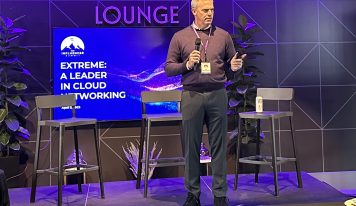Aryaka just announced another great quarter in Q2 – 150% growth.  These are the highlights:
These are the highlights:
- Over 150% year over year growth for Q2 and the first half of the year, as compared to 2015
- Over 70 new customers added, including gaming company, Demonware; cable manufacturer, Volex; the educational platform, Knewton; and Quanshi, the leading online collaboration service provider in China.
- 40% of total bookings generated from existing customer base, who expanded their use of Aryaka’s services
- Partner contribution of more than 73% of total Q2 bookings
- Exited Q2 with $45M+ of unbilled backlog (customer contractual commitments yet to be invoiced).
- China, Asia Pacific overall, and Europe were among key growth drivers with bookings in these regions equaling momentum in the U.S.
We had been working on an interview with the company regarding their last quarter results and was just about to post it. The timing couldn’t be better. Here is that interview. We’re sure you can gain a good understanding about the company’s recent growth based on the answers to this interview from last quarter. Certainly SD-WAN is shaping up to be a very disruptive technology partially fueled by arbitrage savings of more expensive MPLS networks. Like VoIP and so many other technologies – arbitrage can be a powerful force in allowing new industries to flourish.
You recently announced 120% growth, why do you think that is?
The unique ability of our global SD-WAN to deliver significantly faster application performance for global enterprises, and thus support their business productivity and execution requirements, is reason behind our record growth. In the business context, the growth came from new customer acquisitions, strong traction from within our existing customer base, and channel partner contributions across all verticals and geographies.
Aryaka’s Calendar Q1 2016 Highlights:
- We added 50+ new customers including marquee global enterprises such as Gucci, Havas Worldwide and Dongbu Daewoo Electronics. Exited Q1 with 400+ customers.
- 60% of Q1 bookings were generated from new customers and 40% were derived from existing customers that expanded their footprint and increased their consumption.
- 50% of Q1 2016 bookings were generated from international markets with strong demand from Asia Pacific.
- 55% of Q1 2016 bookings came from channel partners as compared to 15% in Q1 of 2015.
- We added new key service providers, telcos and VARs such as Sinthera, Ampito Group, Videns IT Services BV, IDCBC, and others.
- We exited Q1 with $30M+ of unbilled backlog (customer contractual commitments yet to be invoiced).
How are your solutions helping customers?
Global businesses expect high availability and performance while accessing on-premises and SaaS-based applications on the WAN. Relying on the public Internet adds congestion, packet loss and latency, which deteriorate application performance. This adversely impacts business productivity, execution, and collaboration. Most of these global businesses today use MPLS for their primary application traffic. They also use Internet links as both backup to their MPLS network and as primary links to smaller branch offices. Globalization and MPLS do not work well together – for business reasons. Connecting to remote locations like China, India, Brazil or Australia via MPLS is prohibitively expensive. Plus, lengthy deployment times (typically 60-120 days) can lead to a longer time to market and undue project implementation delays.
Secondly, with cloud adoption reaching ubiquity, and tons of SaaS vendors offering enterprise applications, CRM, and BI solutions with a web front end, network managers are facing a whole new set of challenges. Since the access medium to all these cloud services is primarily the Internet, application performance takes an obvious hit.
WAN Optimization Controllers (WOCs) are used by many companies to supplement their MPLS links with WAN optimization technology, which enhances throughput over the network, resulting in bandwidth savings and enhanced application performance. However, these controllers are heavy on CapEx and are a hassle to manage, maintain, and integrate.
Most Software-Defined WANs (SD-WANs) fail to address application performance issues, especially in global scenarios, due to their reliance on the public Internet.
Aryaka’s global SD-WAN combines a global private network, WAN optimization technology, and SD-WAN functionality, to deliver:
- Up to 40x faster performance for global on-premises and SaaS applications (AWS, Azure, Office 365, Salesforce, etc.), even in locations such as China, Middle East, and Africa
- Deployment within days, not weeks or months taken to deploy MPLS
- Up to 56% cost savings compared to MPLS + WAN Optimization appliances
- Real-time Network and Application visibility
- Fully Managed Service with 24×7 CCIE-level customer support
Specifically, how does your company serve carriers, VARs and corporations?
See answer above for how we serve corporations.
For Partners, see below.
- Our VAR Model consists of our partners who have both sales and technical sellers, can support both Tier 1 and Tier 2 Support, and have additional managed services they can offer our clients in a total solution offering to include services such as procurement.
VARs like doing business with us for three primary reasons:
– Sales Enablement: Aryaka delivers next-generation enterprise WAN solutions that accelerate applications globally. Our global SD-WAN eliminates the cost and hassle associated with legacy technologies, like WAN optimization appliances that chase after public Internet problems, and MPLS connections that cost a fortune and take forever to deploy. Aryaka strengthens and adds value to a partner’s portfolio because it’s a fully managed global SD-WAN service. Our partners can now focus on selling solutions, rather than maintaining and upgrading legacy products. We have over 4,000 customer sites across all verticals, geographies, and revenue sizes.
– Accelerated Deployment: Aryaka’s deployment cycle is measured in days, not months, as is the case with MPLS. So commissions for partner sales teams are turned around much faster, compared to competing products. An MPLS deployment could take months, which means a longer wait on lucrative revenue. The Aryaka global SD-WAN solution can be implemented in days, thus partners can begin receiving commissions almost immediately, while also providing a service that keeps customers satisfied.
– Customer Retention: Aryaka’s customer retention rate is over 90%, which is among the highest in our industry. As a result, partners can drive perpetuity-like revenues and associated sales commissions. Our partners never have to fear their customers will suddenly abandon their businesses in favor of new a WAN provider, because Aryaka’s customers remain loyal and satisfied with the company’s global connectivity solution.
- Our Fusion Model is our industry-changing strategy to obtain global market dominance as we move from IaaS to SaaS. We have been offering global service providers like KDDI and SK Broadband a revenue share model for the past year and are seeing significant results with over 25 global partners to date. We enable global and regional service providers to leverage their brand and their own POP and network infrastructure assets in conjunction with our global network and patented optimization stack (riding on their network), along with a joint go-to-market strategy.
Service providers like doing business with us for the following reasons:
– Since we have a global network , service providers can now expand their footprint and addressable customer base to now drive revenues from their customer locations all over the world, ranging from customers with a single offshore location to large MNCs.
– Deployment options for service providers range from leveraging the entire global network of Aryaka POPs, to installing the Aryaka optimization software stack on their own POPs and utilizing their own bandwidth, or any hybrid combination thereof.
– Given the fast deployment cycle, measured in hours versus months, commissions for sales teams or partners reselling Aryaka solutions are much quicker compared to competing product lines in the industry.
– And with Aryaka’s customer retention rate at over 95%, which is among the highest in any industry, this drives perpetuity-like reseller commissions.
You describe your company as a Software-Defined Network Platform Provider – how does this differ from SD-WAN?
Most Software-Defined WANs (SD-WANs) fail to address application performance issues, especially in global scenarios, due to their reliance on the public Internet.
Aryaka’s Global SD-WAN is built on a Software-Defined Network Platform architecture, which combines a global private network, WAN optimization technology, and SD-WAN functionality, to deliver:
- Up to 40x faster performance for global on-premises and SaaS applications (AWS, Azure, Office 365, Salesforce, etc.), even in locations such as China, Middle East, and Africa
- Deployment within days, not weeks or months taken to deploy MPLS
- Up to 56% cost savings compared to MPLS + WAN Optimization appliances
- Real-time Network and Application visibility
- Fully Managed Service with 24×7 CCIE-level customer support
How do your new POPs in London and Tokyo help global customers?
Following these POP additions, Aryaka’s customers, especially ones with branch offices in EMEA and APAC, can benefit from enterprise-grade global connectivity and significantly faster performance of their on-premises and cloud/SaaS-based applications.
What can we expect from you company in the future?
Aryaka is actively engaged and working with multiple service providers who are looking at deploying our Software-Defined Network Platform on their infrastructure.
The company’s major focus areas for the future are:
– Expand Network Reach: Federation of service providers into the Aryaka platform enables expanded network reach.
– Offer New Services (NFV): The platform model allows the addition and integration of new optimized services on the open platform, not only by building new functionality in-house but also by partnering with other vendors.





